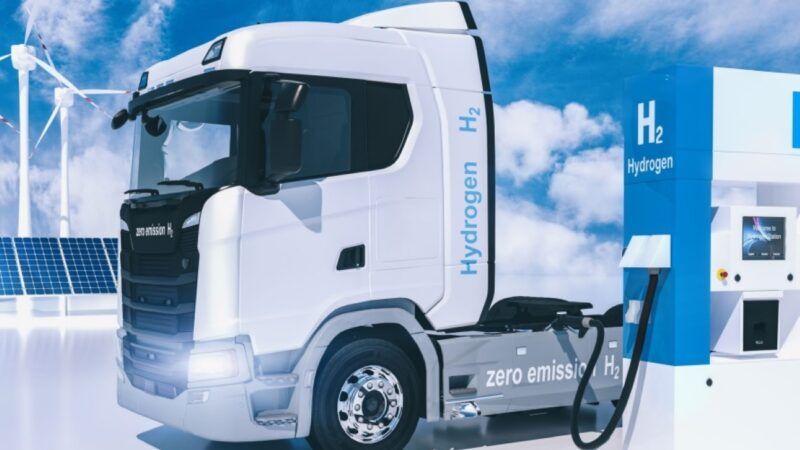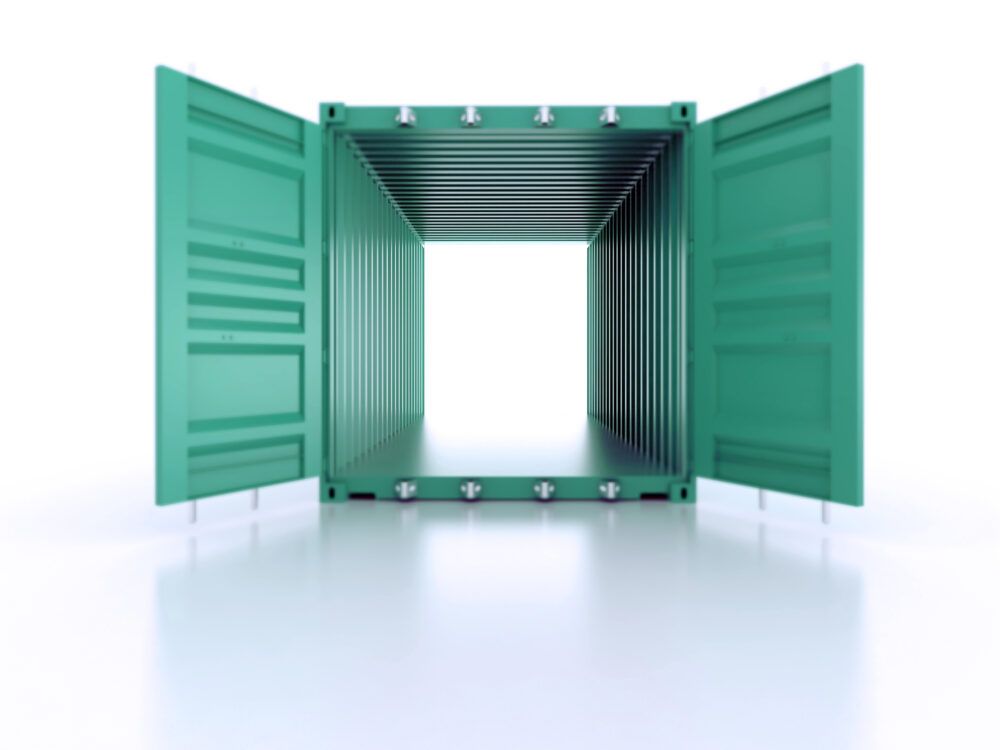 The real challenge is to start the green revolution among all sectors of the maritime industry. (GettyImages)
The real challenge is to start the green revolution among all sectors of the maritime industry. (GettyImages)
Ten ways to decarbonize ports
Green ports? The road to decarbonization and energy efficiency in the port sector is full of difficulties. However, the agenda of actions to achieve more sustainable ports is becoming clearer.
 The real challenge is to start the green revolution among all sectors of the maritime industry. (GettyImages)
The real challenge is to start the green revolution among all sectors of the maritime industry. (GettyImages)
Green ports against pollution
Ports play a key role in the decarbonization of the economy. As points of intersection between land and sea, they can become catalysts for change in a multitude of sectors, ranging from maritime to energy.
To achieve the decarbonization of ports, it is key that all interacting sectors coordinate their strategies. And here is where the real challenge lies: in ensuring that the green revolution is carried out in a common and coordinated manner. We review the ten pathways that will lead to the decarbonization of ports and their surroundings, according to DNV's analysis.
Large cruise ships, merchant ships, trains, cranes, fuel supply systems, and finally, renewable energies. Ports are ecosystems in themselves, in which a multitude of industrial sectors interact, such as maritime, energy, logistics and transport.
Currently, each of these sectors has its own decarbonization goals and strategies to reduce carbon dioxide (CO2) and other greenhouse gas emissions. As a link between them, ports can act as potential decarbonization hubs and leaders in the energy transition.
Clean ports: drivers of change
"Ports are very important logistics centers, with influence on both the maritime sector and cities," explains Sergi Sauri, director of the Center for Innovation in Transport (CENIT). "Actions to decarbonize them can be decisive in fostering change in other agents in the maritime sector and, in turn, minimize the environmental impact their activities have on cities and the rest of their surroundings."
For Sauri, the real challenge to achieve successful decarbonization lies in the coordination of all the agents involved. When it comes to reducing greenhouse gas emissions in port environments, not only technological factors come into play, but also economic, political and social ones.
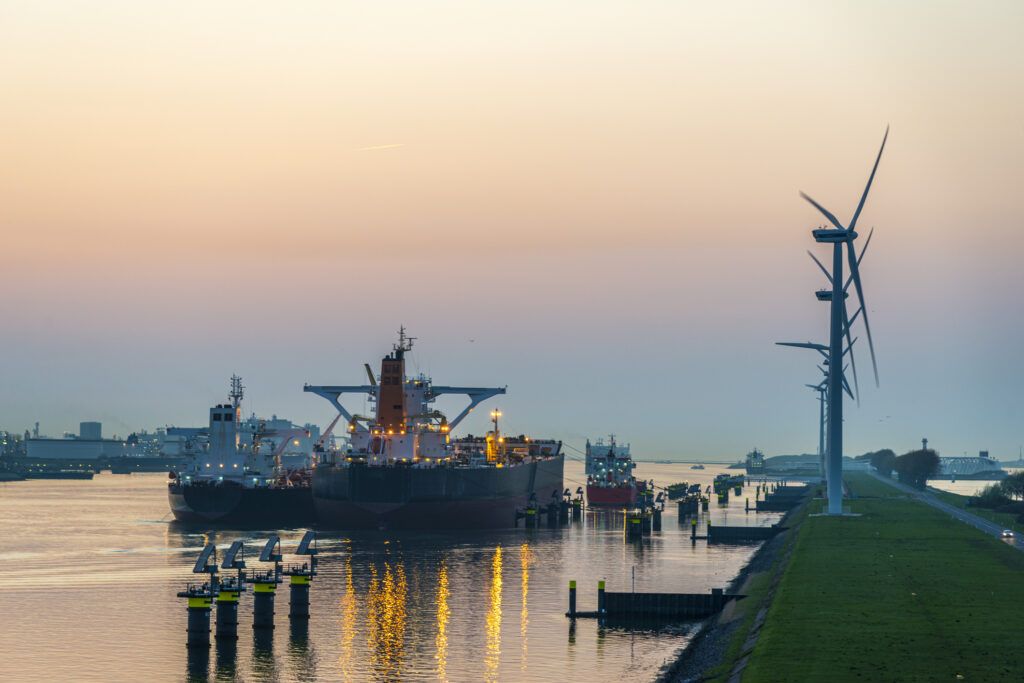
According to the study 'Ports: Green gateways to Europe. 10 Transitions to turn ports into decarbonization hubs' by DNV, there are ten green transitions that can lead to decarbonization in and around ports:
1. The electrification of docks and port vehicles
Electrification is undoubtedly one of the major players in the decarbonization of the economy. In the context of ports, basing activities and processes on electrical energy from renewable sources can reduce greenhouse gas emissions, increase the credibility of port operators and reduce maintenance costs, among other advantages.
"Today, the most effective solution to reduce emissions from ports is to electrify the docks in order to power the ships while they are docked," says Sauri. "This is especially relevant in the case of cruise ships, which are real floating hotels that require a lot of energy. To stop powering them with fossil fuels means big savings in emissions."
However, electrification does not have to end there: it is also possible to provide electric power to vehicles, machinery and other port elements. In turn, and due to their status as major logistics centers, ports are greatly affected by the electrification of other sectors, such as nearby industry and land transport, according to the DNV GL study.
Nexigen is the Port of Barcelona's dock electrification plan that will contribute to a 22% reduction in greenhouse gas emissions from its operations and will be completed by 2030.
2. The introduction of new bunker fuels for maritime transport
One of the solutions to reduce greenhouse gas emissions related to maritime transport is to opt for less polluting fuels. One option that is becoming increasingly relevant and will become part of the energy mix of the future is liquefied natural gas (LNG).
"The first fuel we have always thought about is LNG," says Daniel Ruiz, environmental technician at the Port of Barcelona. "Although it is a fossil fuel, it allows us to reduce CO2 emissions and in the future it will allow the introduction of bio-LNG or synthetic natural gas," he says.
In 2021, the Port of Barcelona supplied more than 65,000 cubic meters of LNG to ships in 236 different operations. This figure is 66% more than the previous year, and places the Catalan organization at the forefront of European ports using this fuel.
The figures are in line with previous years’ trends and the port's short-term objectives. "In 2019, 10% of cruise calls used LNG during their stay at the Port of Barcelona," adds Maria del Mar Perez, Cruise Manager of the port authority. "In addition, from 2023 to 2026, 17 LNG-powered cruise ships will be built."
According to Damià Calvet, president of the Port of Barcelona, LNG is a fundamental part of the port's plans to achieve its goal of zero emissions. "We are working with the port community and shipping companies to promote initiatives such as the electrification of docks, the generation of renewable energies within the port territory and the use of LNG as a transition fuel to move towards the implementation of zero-emission fuels in the port sector and maritime transport," says Calvet.
However, LNG is not the only option being contemplated. Over the next few years, the shipping sector will have to find the best combination of fuels and technologies to achieve decarbonization goals. Ammonia is attracting attention as a potential carbon-free fuel for shipping. Especially because of its high liquefaction temperatures and energy density and the fact that it is the easiest to store and transport, compared to hydrogen.
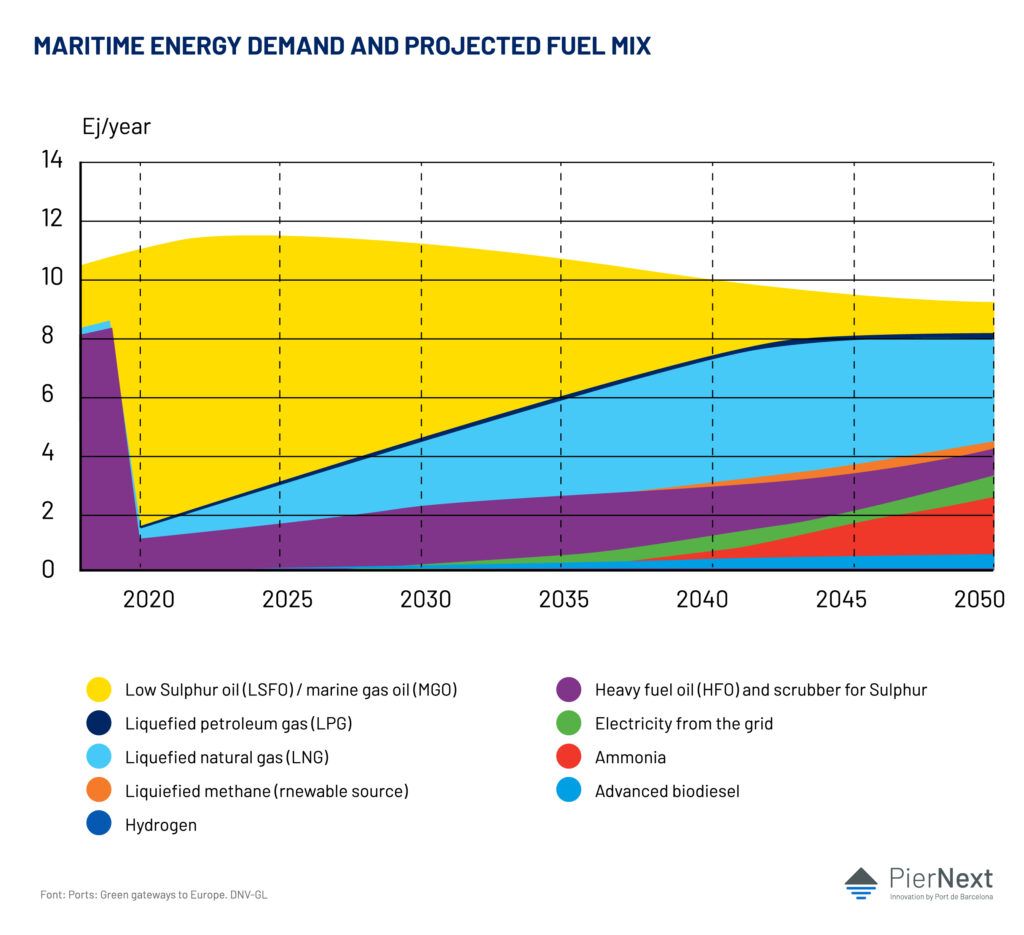
In addition, there is already an infrastructure in place to handle it (although no facilities to supply it to ships as fuel) and the shipping industry has experience in loading and handling it on board. Its main barrier, however, is its high toxicity.
Dutch oil company Royal Dutch Shell, on the other hand, rules out ammonia, biofuels and nuclear power in its report 'Decarbonising Shipping: Setting Shell's Course' and opts for hydrogen. It argues that the interest it is attracting (for energy production, as a fuel for land transport or as a raw material for industry) could help develop necessary production and distribution infrastructure so it can become the fuel of the future for the maritime sector.
All this shows us that, although experts agree that shipping is evolving towards cleaner fuels, there is not the same consensus on what the energy mix of the future will be.
The real challenge to achieve successful decarbonization lies in the coordination of all the agents involved
3. Electrification of the maritime industry
Sustainably generated electric power is a general trend and necessary to decarbonize the industry as whole and that surrounding ports in particular.
"Electrification of industry will be made possible by innovations in wind and solar energy, energy storage, low-carbon hydrogen production, heat pumps and the increasing availability and lower prices of wind and solar electricity," the DNV GL study notes.
This process will lead not only to a reduction in emissions, but also to the use of electricity to capture and store carbon or produce hydrogen, something that can be done in the ports facilities.
4. The use of offshore wind energy
The connection of offshore wind energy to the grid is another development that can have a major impact on the ports’ energy system. Especially in those regions where winds blow strongly and frequently, such as in the North Sea.
"Transport sustainability is not achieved if there is no sustainable energy model behind it," Sauri points out. "Thus, to achieve real decarbonization, electrification must come from renewable energy sources. Wind power is going in this direction: ports have the competitive advantage of being close to the sea and can take advantage of this energy by installing windmills in their vicinity."

5. Energy system integration
Energy system integration refers to the growing trend to interconnect all energy grids to take advantage of their potential as a whole.
"An interlinked system makes it possible to connect all the grids. For example, the electricity and hydrogen grids: using surplus production peaks of renewable energies such as solar or wind power to produce hydrogen and, with it, generate methane gas that is returned to the grid," explains Daniel Ruiz. "This allows us to gain sustainability and adjust supply and demand."
Another major advantage of integrating these systems is to gain energy independence. For ports, which operate like small cities, this is a clear competitive advantage.
6. The use of hydrogen in port facilities
In parallel to the use of alternative fuels in ships, and closely linked to the integration of the energy system, is the use of hydrogen. The Port of Barcelona is studying the possibility of generating green hydrogen (i.e., from totally renewable energies) in or near the port facilities.
"Hydrogen is totally carbon neutral if it is generated with renewable energies, which meets the Port of Barcelona's goal of reducing emissions," says Ruiz. This would have different uses; to power ships, to store energy or to generate products such as ammonia (NH3) or synthetic fuels, for example.
"In about ten years we should already have an approach to change the model and abandon fossil fuels. By producing green hydrogen or importing it and reserving a space for its storage, we would gain energy independence and also generate traffic in the port to export it," explains the environmental technician.
7. Eradication of fossil fuel-based power plants
The location of large fossil fuel-fired power plants is common in large ports. However, their contribution to greenhouse gas emissions makes it necessary to phase them out and replace them with more sustainable solutions.
This process has several impacts on ports, ranging from the loss of instability in energy procurement to the opportunity to be able to take advantage of the spaces they currently occupy for other purposes. For example, to accumulate green hydrogen reserves or to capture and store carbon.
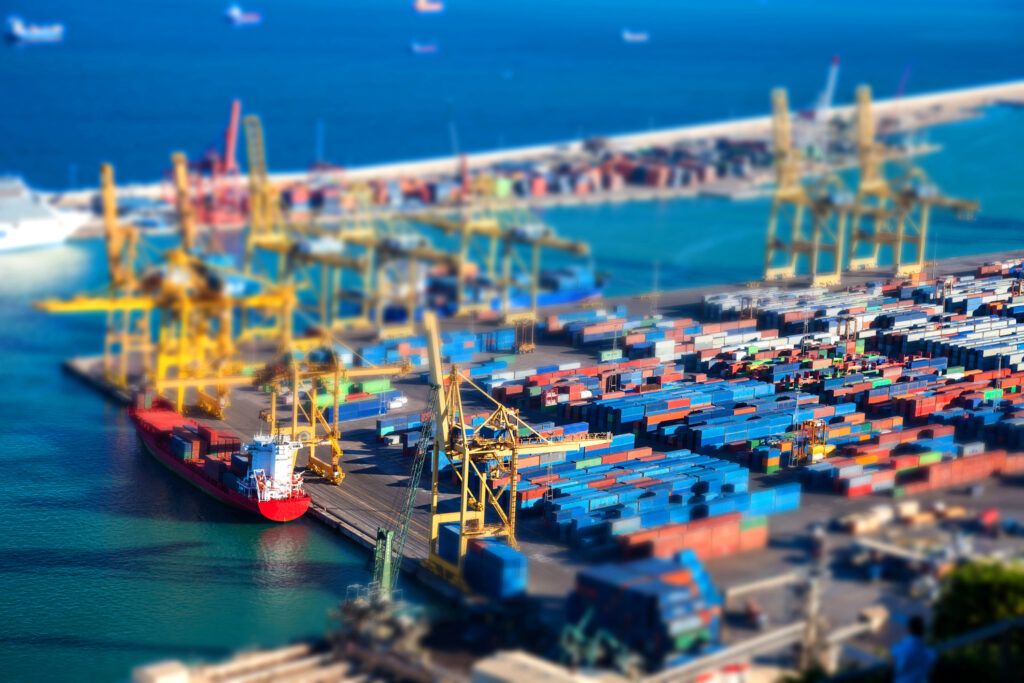
8. Carbon capture and storage in ports
One of the opportunities for ports is to take advantage of their enclosures to capture, store and then use carbon. "Ports are like small cities, so they can take advantage of their closed and controlled enclosures to capture and store carbon in a controlled way," says Sauri.
One example is provided by the port of Antwerp, which currently has a project to capture half of the port's CO2 emissions (18.65 million tons of greenhouse gas emissions in 2017) by 2030. In the long term, the goal is to use this carbon as a raw material for various industrial processes or to export it to other countries.
9. The development of new maritime regulations
The European Union and the International Maritime Organization are some of the bodies that have regulatory frameworks and policies aimed at favoring the decarbonization of the maritime sector and ports.
"The decarbonization processes can be done by choice or by the imposition of regulation," Ruiz points out. "Currently, from Europe there is a commitment to promote decarbonization issues and there will be more and more regulations. Within the ports we are working to adapt our objectives to their guidelines. In Barcelona, for example, we are looking to achieve 50% decarbonization by 2030 and 100% by 2050."
10. Promoting a circular economy
Achieving a circular economy is the ultimate goal of any organization or entity seeking sustainability. "A circular economy extends the useful life of products and encourages them to be designed for repair, reuse and recycling," the DNV GL study notes.
For ports, which are limited ecosystems, this can help to strengthen their energy independence and the use of materials. The circular economy is thus presented as the objective and the final result of having correctly carried out the long process of decarbonization. .
To return to the initial question: Are there any green ports? The answer is loud and clear: yes. There is no other way. The journey has already begun and there is no turning back, the coastline is no longer visible from the stern. But the actions, as seen, are multidisciplinary and require a broad consensus, a coordinated regulation and the whole sector rowing in the same direction. The course towards a horizon of sustainable and efficient ports is set.




